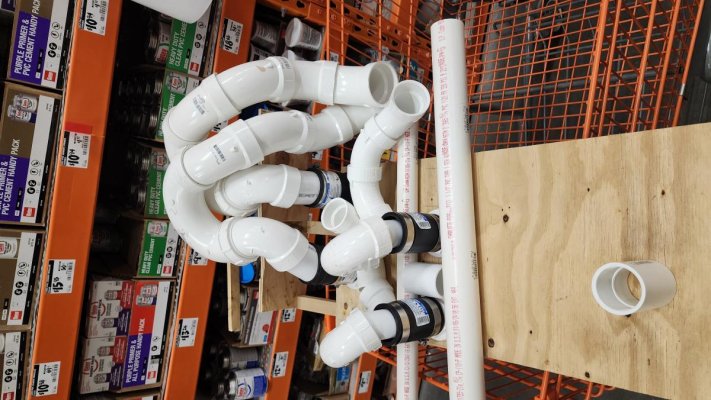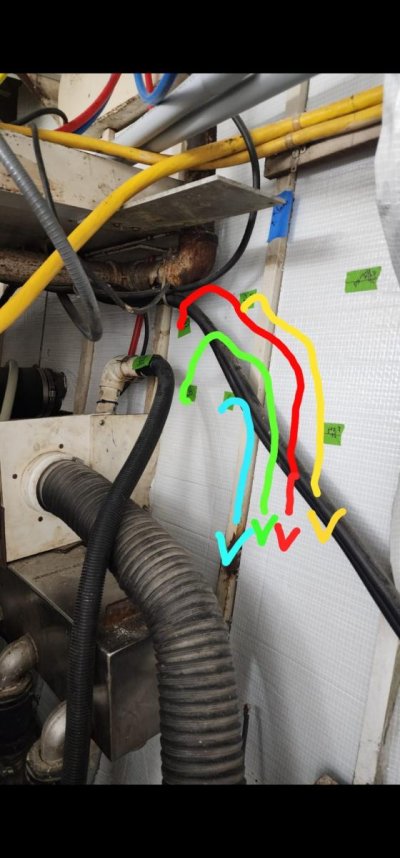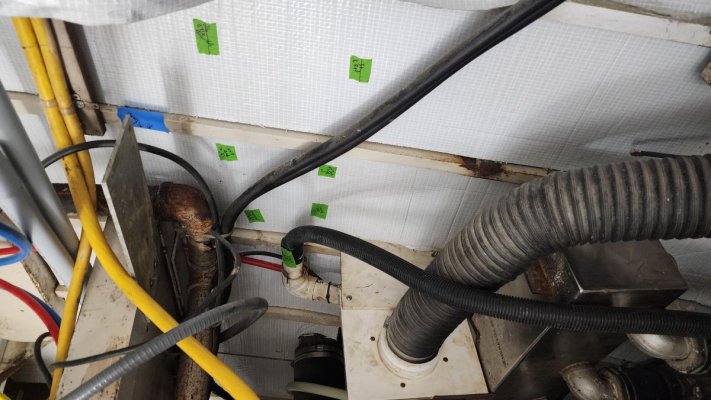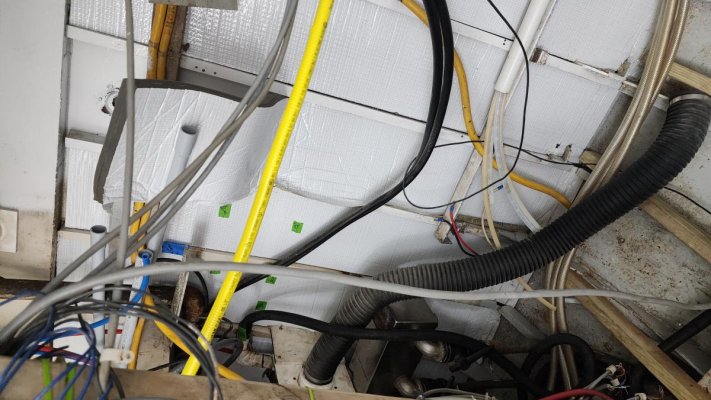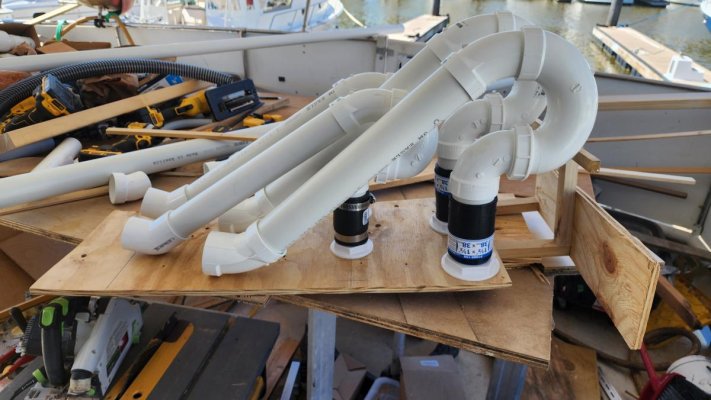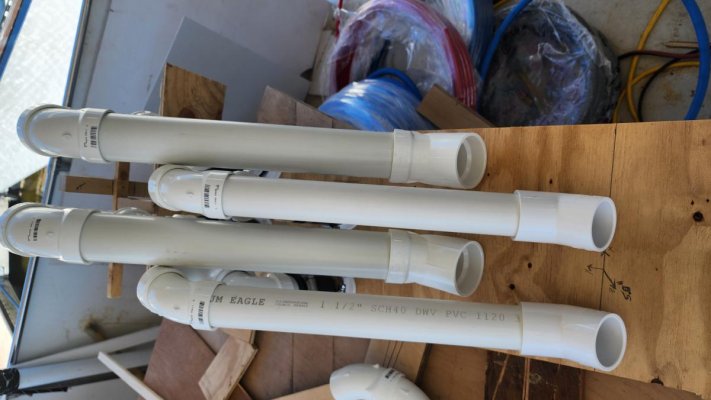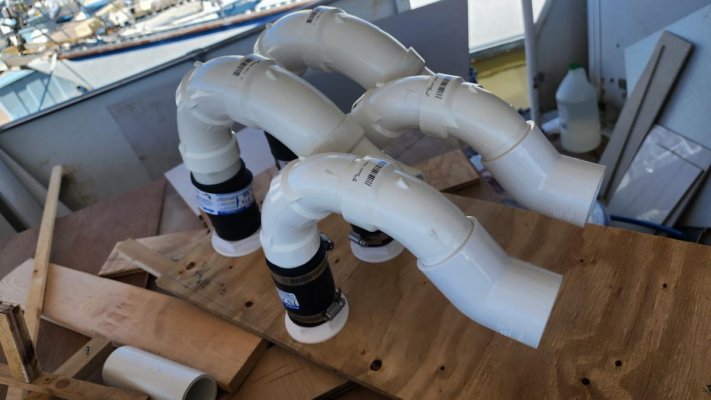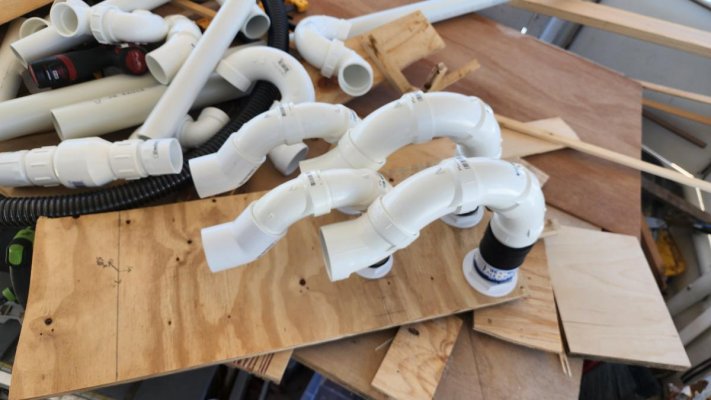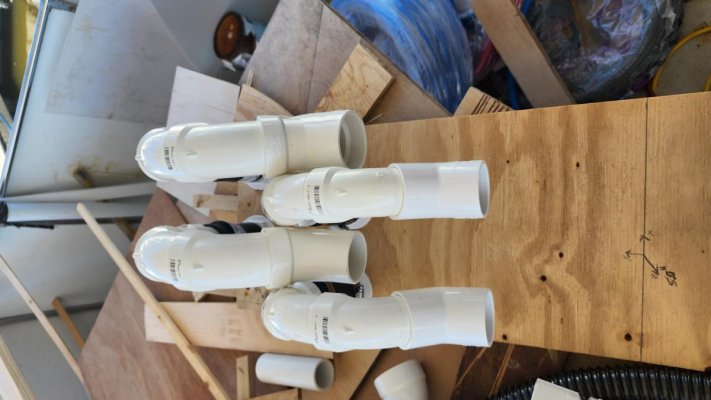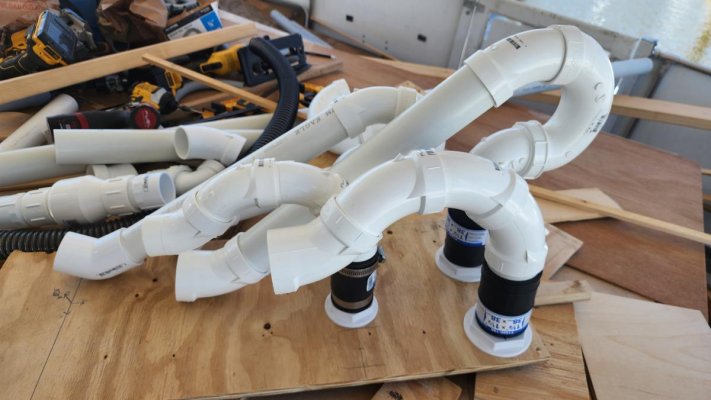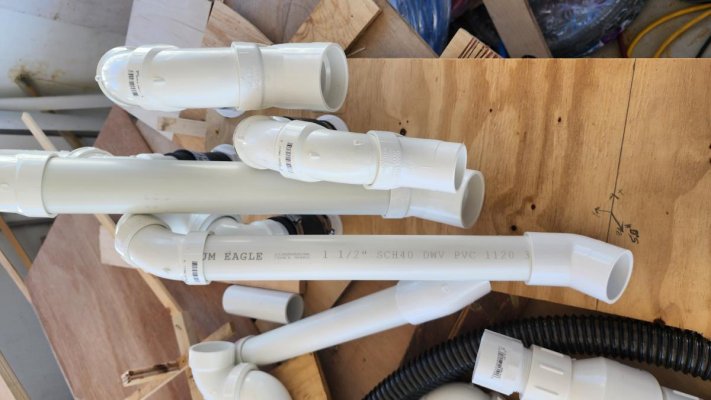So I built a mockup of one of the walls where the thru hulls will be installed in my engine room. There are 4 thru-hulls on each side. 2 for regular, 2 for high water.
The high water uses a 2" line, and the regular uses a 1.5" line. The longer section of the plywood is the bottom. Above this area is a shelf and a fuel line, so neither can be moved. I am looking at going up so as to provide a loop to prevent water from coming in easily. The lower thru hulls sit about 12" above the water line. The higher thru hulls sit about 22". The V's at the end of colored lines represent ball valves. I looked at tigerflex 241 and 244 and found that bending them in that diameter is not too feasible.
Will this work and not kill my pump output capacity more than needed, and is there a better way, or idea?
The high water uses a 2" line, and the regular uses a 1.5" line. The longer section of the plywood is the bottom. Above this area is a shelf and a fuel line, so neither can be moved. I am looking at going up so as to provide a loop to prevent water from coming in easily. The lower thru hulls sit about 12" above the water line. The higher thru hulls sit about 22". The V's at the end of colored lines represent ball valves. I looked at tigerflex 241 and 244 and found that bending them in that diameter is not too feasible.
Will this work and not kill my pump output capacity more than needed, and is there a better way, or idea?

